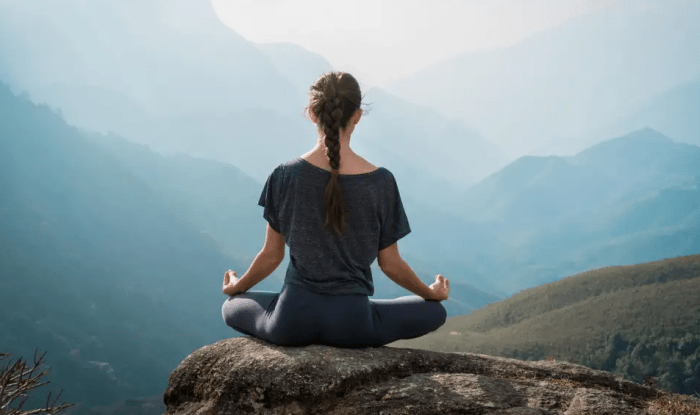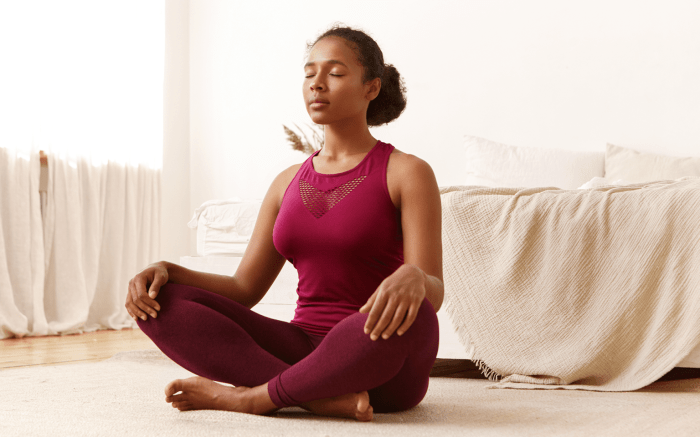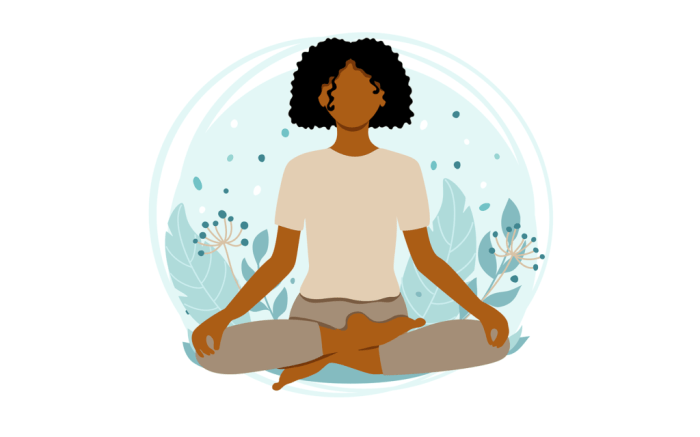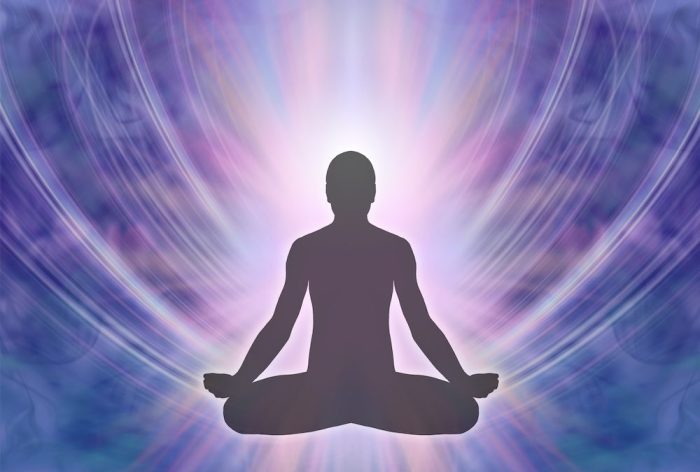Yo, ready to dive into How to Meditate for Creating Inner Balance? Let’s explore the world of meditation and how it can help you find your inner zen.
From defining meditation to overcoming challenges, we’ve got you covered with all the tips and tricks you need to start your meditation journey.
Introduction to Meditation for Inner Balance

Meditation is a practice that involves focusing the mind and eliminating distractions to achieve a state of clarity and inner peace. It is an ancient technique that has been used for centuries to promote overall well-being and create a sense of balance within oneself.
For beginners seeking a quick mindfulness meditation session, this 10-Minute Mindfulness Meditation for Beginners guide is perfect for incorporating mindfulness into your daily routine.
One of the key benefits of meditation is its ability to improve mental and emotional well-being. By calming the mind and reducing stress, meditation can help individuals manage anxiety, depression, and other mental health issues. It can also enhance self-awareness, increase concentration, and promote a positive outlook on life.
Looking to deepen your spiritual practice through meditation? Learn How to Meditate for Spiritual Enlightenment and connect with your inner self on a spiritual level.
Benefits of Meditation on Mental and Emotional Well-being
- Reduces stress and anxiety levels
- Improves emotional stability and resilience
- Enhances self-awareness and mindfulness
- Promotes a sense of inner peace and contentment
Examples of How Meditation Can Positively Impact Daily Life
- Helps in better decision-making by increasing clarity of thought
- Improves focus and productivity at work or in studies
- Enhances relationships by fostering empathy and compassion
- Supports better sleep patterns and overall physical health
How Meditation Differs from Other Relaxation Techniques
Unlike other relaxation techniques that may provide temporary relief, meditation offers a deeper sense of connection with oneself and the world around. While relaxation techniques focus on external factors to reduce stress, meditation delves into internal awareness and self-discovery, leading to long-lasting benefits for inner balance and well-being.
Types of Meditation Practices

In the practice of meditation, there are various techniques that can be utilized to create inner balance. Each type of meditation offers unique benefits and approaches to achieving a state of calmness and harmony within oneself.
Mindfulness Meditation
Mindfulness meditation involves focusing on the present moment without judgment. By paying attention to sensations, emotions, and thoughts as they arise, individuals can cultivate self-awareness and acceptance. This practice helps in reducing stress, anxiety, and enhancing overall emotional well-being.
Loving-Kindness Meditation
Loving-kindness meditation is centered around cultivating feelings of love, compassion, and goodwill towards oneself and others. By sending positive intentions and blessings to oneself and different individuals, practitioners can foster a sense of interconnectedness and empathy. This practice can improve relationships, boost self-esteem, and promote a sense of inner peace.
Are you looking to transform your mindset through meditation? Check out this comprehensive guide on How to Meditate for Transforming Your Mindset to start your journey towards inner peace and clarity.
Transcendental Meditation
Transcendental meditation involves silently repeating a mantra to transcend ordinary thinking and reach a state of pure awareness. This technique aims to access deeper levels of consciousness and promote relaxation, concentration, and spiritual growth. By engaging in this practice regularly, individuals can experience reduced stress, improved clarity of mind, and increased creativity.
Guided Meditation Techniques for Beginners
For beginners looking to start their meditation journey, guided meditation techniques can be especially helpful. These practices involve following instructions from a teacher or a recorded audio to lead individuals through the meditation process. Examples include body scan meditation, breath awareness meditation, and visualization meditation. By following these guided practices, beginners can learn the fundamentals of meditation and gradually develop their own practice.
Choosing the Right Meditation Practice
When selecting a meditation practice, it is essential to consider individual preferences, goals, and comfort levels. Some may resonate more with mindfulness meditation for its focus on the present moment, while others may prefer loving-kindness meditation for its emphasis on compassion. Experimenting with different techniques and seeking guidance from experienced practitioners can help individuals find the right meditation practice that aligns with their needs and preferences.
Steps to Start Meditating

Starting a meditation practice for inner balance can be a transformative journey towards mental clarity and emotional well-being. Here are the essential steps to begin your meditation practice:
Ideal Environment for Meditation, How to Meditate for Creating Inner Balance
Creating a peaceful space is crucial for effective meditation. Choose a quiet and clutter-free area where you can sit comfortably without distractions. Dim lighting, soothing music, or incense can help set a calming ambiance for your practice.
Tips on Posture, Breathing Techniques, and Focusing the Mind
- Sit in a comfortable position with your back straight and shoulders relaxed. You can choose to sit on a cushion or chair.
- Close your eyes and take slow, deep breaths. Focus on the sensation of your breath entering and leaving your body.
- When thoughts arise, gently acknowledge them and bring your focus back to your breath. Avoid judgment and simply observe your thoughts without attachment.
Setting Realistic Goals and Establishing a Consistent Routine
- Start with short meditation sessions, gradually increasing the duration as you become more comfortable.
- Set realistic goals for your practice, such as meditating for 5-10 minutes daily.
- Establish a consistent meditation routine by choosing a specific time each day to practice. Consistency is key to experiencing the full benefits of meditation.
Overcoming Challenges in Meditation: How To Meditate For Creating Inner Balance

When embarking on a meditation journey, practitioners often encounter various challenges that can hinder their progress towards inner balance. It is essential to acknowledge these obstacles and learn how to overcome them effectively to cultivate a consistent and fulfilling meditation practice.
Dealing with Distractions and Maintaining Focus
Distractions are a common hurdle faced during meditation sessions, disrupting the peace and focus required for inner balance. To overcome distractions, practitioners can implement the following strategies:
- Acknowledge distractions without judgment and gently guide the focus back to the breath or chosen point of concentration.
- Practice mindfulness by observing distractions without getting attached to them, allowing them to pass by like clouds in the sky.
- Utilize grounding techniques such as focusing on the sensations of the body or the environment to bring the attention back to the present moment.
Managing Racing Thoughts and Achieving Inner Calm
Racing thoughts can disrupt the tranquility of the mind during meditation, making it challenging to attain a state of inner calm. To address this issue, practitioners can employ the following techniques:
- Practice breath awareness to anchor the mind and alleviate racing thoughts, focusing on the inhalation and exhalation to create mental clarity.
- Engage in guided meditation sessions or use calming music to soothe the mind and reduce the intensity of racing thoughts.
- Explore visualization techniques to create a peaceful mental landscape, diverting attention from the racing thoughts towards positive imagery.
Staying Motivated and Committed to Meditation Practice
Maintaining motivation and commitment to a regular meditation practice can be challenging, especially when faced with busy schedules and competing priorities. To stay dedicated to meditation, consider the following tips:
- Set realistic goals and establish a consistent meditation schedule that aligns with your daily routine, making it easier to integrate meditation into your lifestyle.
- Find a supportive community or meditation group to share experiences and insights, fostering a sense of accountability and motivation.
- Celebrate small victories and milestones in your meditation practice, recognizing the progress made and the positive impact on your overall well-being.
As we wrap up our discussion on How to Meditate for Creating Inner Balance, remember that finding peace within is a journey worth taking. Start meditating today and discover the power of inner balance.